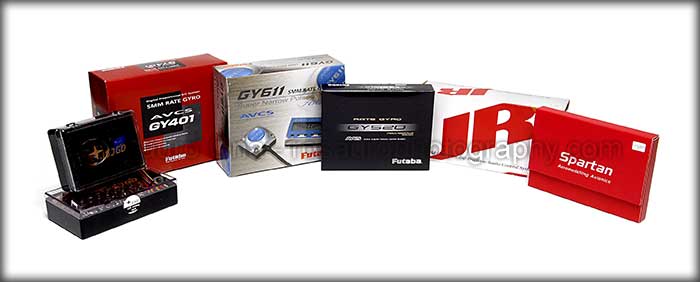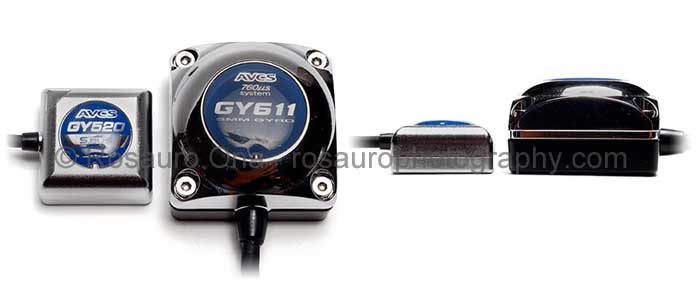|
"Seeing is believing..."
Overall
impression of DJIís XP3.1 Standard is
excellent. This is a remarkable piece of
equipment for aerial photographers shooting
stills, panoramas or videos. It strengthens
overall operational safety and minimizes
pilot fatigue and stress levels. This will
definitely benefit those that work solo. In
simple terms, just fly the helicopter to
altitude, hover, shoot and land. Itís
really that uncomplicated.
ďSimpleĒ cannot be stressed any further.
Installation
was to some extent straightforward. The
challenging part of the installation is
deciding how to install XP3.1ís components
in relation to the existing installation of
other electronics.
GPS hold is
excellent on the XP3.1 considering this is
merely the standard version. The manual
mentions that itís good up to 28Km. It was
tested well beyond a 35Km wind and it held.
Just point the nose of the helicopter
towards the wind. The combination of GPS
and IMU sensor is key with itís position
holding performance.
Altitude
hold is excellent as well. In a no-wind or
light wind conditions altitude hold works
really well. In a gusty wind condition you
will notice the helicopter fighting the wind
but still holds its position fairly
decent. For video work the XP3.1 will make
life much easier in post production. The
barometric sensor does an excellent job at
preventing sudden climbs or descents.
IMU enhances the overall stability of the
helicopter.
The best way to describe it, for lack of
better terms, Itís
like riding on ďrailsĒ. Therefore making
videos much easier to work with and view.
The pilot has to remember XP3.1ís
weaknesses as well. Due to itís
"stabilizing" characteristics
the helicopterís agility is decreased.
Therefore a carefully planned flight path must be
prepared ahead of time. Any input in auto pilot mode is slow.
Climbs and descents are slow as well as per
its specifications. On a windy day
descents will be slow or difficult so if
hovering at a very high altitude make sure
sufficient battery power is available.
Otherwise a descent in manual mode, without
any stabilization, is necessary, If obstacles must be
avoided then quickly switch back to manual
mode. A pilot cannot
solely rely on the XP3.1 system. The pilot
must still be able to fly the helicopter in
manual mode, in any orientation and in any
weather condition
confidently.
Traditional
eye-hand-stick-coordination no longer
applies when flying with this system. For
example in forward flights the cyclic stick
is pushed forward. Thatís it; one finger is
all that is required. For turns just push the
rudder stick left or right. To stop just
let go of the controls. Every other
correction is done by the system. Hence
additional flight training is required to
adapt oneself to the new flying method and
still be able to switch back to traditional
flying style at any given moment.
Future wish
list? One "wish" feature is the ability to enable either
altitude or position hold separately.
Currently both are enabled during auto pilot
mode.
Second is
the ability to adjust gain, via
sliders/knobs, on altitude and position hold
separately. This would allow for a more
aggressive flying style when required.
Hopefully this would also increase the
current maximum flight speed of 30Km/h.
Possibly
adding an AUX2 and AUX3 for other heli
setups that'll require more inputs.
One option the manual does not mention is
the ability to plug in an second power
source into the AUX port for redundancy.
During
the review I ended up having to test out
various gyros. At first
Futaba 611 gyro was installed which did not
function properly with the XP3.1.
There was a tail "twitch" in both Manual and
Auto mode in heading hold. The
"twitch" was fixed but a drift issue came
about shortly afterwards. This was
never resolved. So as per my testing I
cannot recommend Futaba 611 until this
issue is resolved. I'll look into this
further later on.
Futaba 401 gyro
with 9254 tail servo was
installed and worked properly (as
recommended by DJI). This was easy to
setup.
Spartan
ds760 AVCS gyro was tested with Futaba 9254,
9256 and BLS251 tail servos and worked
properly as well. Acceleration
and Deceleration profiles were reduced to
avoid the "twitch". Rudder sensitivity
was also reduced.
JR G770
3D gyro with S890G tail servo was tested and
worked properly.
SJGD
PG800 AVCS gyro with Futaba 9254, 9256 and
BSL251 worked as well. Again,
acceleration and deceleration were reduced
to avoid "twitching".

Left to right: SJGD PG800, Futaba 401,
Futaba 611, Futaba 520, JR G770 3D and Spartan ds760.
The last
gyro I tested was the Futaba 520. This
gyro is really small compared to its peers.
For those concerned about weight then this
would be it. Performance is as
expected; perfect. It was tested with
9254, 9256 and BLS251. Easy to setup.
No control unit. Computer
interface via USB is optional. No twitching or drifting. Non-plastic
body. Holds rock solid.

Futaba 520 and 611 compared side-by-side.
Out of
all these gyros I would have to say Futaba's
520,
Spartan's ds760 and SJGD's PG800 would be
excellent choices as they will allow the use
of various tail servos.
But
SJGD's PG800 and Futaba 520 has an advantage as it does not
require the use of a computer for
adjustments in the field. Also found
both to have more of a straightforward setup.
PG800 has a small control unit to plug into.
520 can be adjusted using its "light" codes.
Just an FYI.
Currently
XP3.1 does not support flybarless
helicopters. As per DJI's testing a
combination of XP3.1 and an electronic
flybar system is possible. Also the
use of the XP3.1 with a multi-head
helicopter also works. There are plans
to add flybarless functionality to future
models.
Customer
service is excellent. DJI was
contacted numerous times and were very
helpful and timely with their responses.
I had a power switch issue with the adapter
and LED
and DJI quickly sent a replacement.
At this
price point, with a number of available GPS
stabilizers out on the market competing for
the ultimate "hold", DJI has definitely come
out exceptionally solid with their XP3.1
Standard. Its feature set is by far more
than adequate for most aerial photography or
video work. Future models with higher
precision and features are in development.
A special
thanks to the RC gurus at Advance RC - APV
Canada and
Rotor RC for their continued support, contributions and
assistance in making this review possible
and an enjoyable one.
Also a
thank you to "Joyce". Despite the hail
storm in May she was willing to continue
with the shoot.
It would
have been impossible to do this on my own
without the help of these folks.
Thanks
guys!
PS:
I will continue to update this review.
Other RC Heli Autopilot Reviews
DJI
AceOne
CAPTRON
HeliCommand Profi GPS
In
December 2010 DJI release the Ace One that
replaced the XP3.1
Read
it here!
DISCLAIMER
The use of remote
control aircraft models is inherently a
dangerous activity that can pose serious
injury or total destruction of the
aircraft itself if not operated and
maintained properly. You must possess a
high level of pilot competency to
control your aircraft in all
conditions. If you are new to this
hobby please seek professional help.
The DJI XP3.1 is
complicated equipment that requires
intermediate to advance remote control
helicopter piloting, building and
configuration understanding and
experience. Even with its failsafe
feature there is still a possibility of
system failure that can occur that is
beyond the system's control.
Therefore a ritual pre and post flight
inspection should be performed.
I have made every effort to ensure that
the information provided in this review
is accurate and up-to-date. I will
continue to update this review as I
receive new information from DJI.
If you notice any errors or details that
I may have missed please let me know as
soon as possible and I will correct them
as appropriate.
Any use of information, in text, images
or videos, in this review is entirely at
the risk of the user. Rosauro
Photography assume no responsibility and
shall not be liable, directly or
indirectly, to the user or any other
third party for any damage or injury
resulting from the use of the
information within this review.
Rosauro Photography hereby formally
disclaims liability in respect of such
abovementioned matters.
Thank you!
|